 When U.S. governments take Americans into war, we hear them justify it as a fight for freedom. Often they rationalize it as an anti-tyranny fight, a pro-peace fight and a pro-democracy fight.
When U.S. governments take Americans into war, we hear them justify it as a fight for freedom. Often they rationalize it as an anti-tyranny fight, a pro-peace fight and a pro-democracy fight.
Freedom appeals to Americans. It is a core American value, even if it’s not honored in practice here at home.
When politicians use freedom to justify war, they are making an emotional, not a reasoned, appeal. Why? It’s because freedom, while a good thing, is never alone a sufficient reason for the government to commit Americans to a fight for freedom in some foreign land. The war may cost Americans more than they benefit, and America’s wars have. American interventions may cost foreigners more than they gain, and America’s interventions have.
To justify American interventions on grounds of reason or rational interest, the government needs to present arguments. Costs and benefits have to enter the picture. Leaders are reluctant to make such arguments for fear of exposing their war policies as lacking justification from the point of view of American welfare. When they do present their arguments, they are invariably faulty, weak, deficient, exaggerated, illogical and mistaken. They are nonsense. Leaders cannot tell Americans what their real reasons for intervention are, if indeed they themselves are aware of them.
President Truman addressed the nation several times about American intervention in South Korea, such as on July 19, 1950 and September 1, 1950. He made the case for sending American armed forces to Korea. Consequently, between 1950 and 1953, Americans lost 33,686 dead and suffered 92,134 wounded.
The July address made a domino theory argument:
“This attack has made it clear, beyond all doubt, that the international Communist movement is willing to use armed invasion to conquer independent nations. An act of aggression such as this creates a very real danger to the security of all free nations.”
We now know that great doubt surrounded the meaning of the North Korean attack and its motivation. We now know that there was no monolithic international Communist movement, and that this imagined entity was not on any march to conquer independent nations of which South Korea was the first. There was no “very real danger” to America’s national security or other free nations far from Korea.
Truman went on with a freedom appeal: “This [attack] is a direct challenge to the efforts of the free nations to build the kind of world in which men can live in freedom and peace.”
The assertion he made is that war in Korea somehow undermined the work of other nations to live in freedom and peace. Somehow a war anywhere challenges peace everywhere. This linkage makes no obvious sense unless the war in question is the work of an incipient or active empire that has the intent of territorial expansion. Regional wars do not routinely meet that condition. North Korea was not such a power.
However, despite the limited nature of the war, Truman argued a second domino theory version:
“The free nations have learned the fateful lesson of the 1930′s. That lesson is that aggression must be met firmly. Appeasement leads only to further aggression and ultimately to war.”
The lessons of the 1930s are that America should not have entered World War I, should not have created a monetary system that led to inflation and a Great Depression, and should have stayed out of Europe’s wars. The victors in World War I should not have imposed a draconian peace at Versailles. Not all aggressions must be met by American force. Not all neutrality is appeasement. Not all aggression creates further aggression. Not all situations parallel those in the 1930s. Not all dictators are Hitlers. Truman’s domino theory of appeasement did not justify American intervention in Korea.
Truman’s September address deepened his appeals. He added that the war was for the sake of peace, and he embedded the freedom appeal in the millennia of history:
“These men of ours are engaged once more in the age-old struggle for human liberty. Our men, and the men of other free nations, are defending with their lives the cause of freedom in the world. They are fighting for the proposition that peace shall be the law of this earth.”
This passage includes an appeal to universal, earth-wide law and order, brought about by American soldiers in Korea.
Truman appealed again to a third domino theory: “If the rule of law is not upheld we can look forward only to the horror of another war and ultimate chaos.” The argument is that without someone like America upholding the international rule of law of the UN, war and chaos will result.
This theory is false. Not only have U.S. interventions created war and chaos, but many wars have been launched after 1950 despite the fact that the U.S. government chose to intervene in Korea, Vietnam and other places, with or without international approval.
Such welcome peace as there has been as compared with the two world wars has causes far afield from the U.S. intervening to keep the peace or intervening in places like Korea, Vietnam, Yugoslavia, Iraq, Libya, Syria, Mali, Yemen, Afghanistan, and Ukraine.
The upholding of international law by American force, a pax Americana, is imaginary. This is neither a necessary condition for peace nor a sufficient condition for peace.
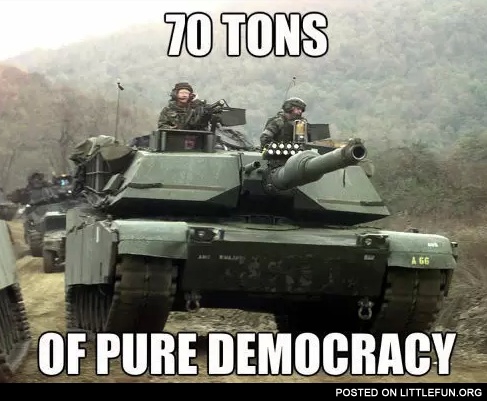 To gain domestic support for an unpopular war, Truman raised the ante in his freedom appeal:
To gain domestic support for an unpopular war, Truman raised the ante in his freedom appeal:
“It is your liberty and mine which is involved. What is at stake is the free way of life–the right to worship as we please, the right to express our opinions, the right to raise our children in our own way, the right to choose our jobs, the fight to plan our future and to live without fear. All these are bound up in the present action of the United Nations to put down aggression in Korea.
“We cannot hope to maintain our own freedom if freedom elsewhere is wiped out. That is why the American people are united in support of our part in this task.”
None of these exaggerations were true in 1950. None are true in 2014. They are no more true than the recent false idea that jihadists are intent on wiping out American freedoms.
Lyndon Baines Johnson continued the same rhetoric in his message to Congress of August 5, 1964:
“1. America keeps her word. Here as elsewhere, we must and shall honor our commitments.
“2. The issue is the future of southeast Asia as a whole. A threat to any nation in that region is a threat to all, and a threat to us.
“3. Our purpose is peace.. We have no military, political, or territorial ambitions in the area.
“4. This is not just a jungle war, but a struggle for freedom on every front of human activity.”
His point #1 adds a new rationale, which is the circular rationale that we will fight to maintain our credibility, having earlier made a statement or signed a treaty that we would fight. This is not an independent justification.
#2 is a domino theory, and #4 is Truman’s grandiose idea that this particular war is a much larger war to defend freedom. Truman’s idea no doubt has earlier roots too. #3 is an argument that we can go into this war because we have no ambitions but the noble one of peace. This argument is as false as the others. There are always other ambitions that may be called imperial.
Bill Clinton’s rhetoric on intervention in Kosovo is like that of his predecessors. He invoked the appeasement theory, once again referring to the irrelevant Hitler analogy. He provided a twist on a domino theory by worrying about the conflict spreading to neighboring lands. (This argument hasn’t bothered Bush or Obama In the Middle East.)
And Clinton added a new argument that American prosperity depended on Europe being “safe, secure, free, united, a good partner”. Whew! War for international bankers and international companies! Kosovo matters!
This argument is highly implausible, and it never explains why Europeans cannot intervene on their own if Kosovo’s so important. Now, just extend Clinton’s argument to all the rest of the world in which Americans have trade and investment relations and you have the makings of interventions anywhere on the planet.
The question arises as to whether the U.S. government exists to further American economic relations with the rest of the world, using war as one means. This is hardly what is meant by keeping the peace or defending the nation.
As for Bush, let us note one phrase in his Iraq speech that echoes Truman:
“Intelligence gathered by this and other governments leaves no doubt that the Iraq regime continues to possess and conceal some of the most lethal weapons ever devised.”
Bush’s phrase “leaves no doubt” eerily matches Truman’s “beyond all doubt”. Bush was totally wrong on this score, as wrong as was Truman in his day. Presidents have to make big and unproven claims because they are taking America into war, and war is big. They do not have to be false claims. Why then are they false? After all, in his speech, LBJ lied about the Gulf of Tonkin, as the U.S. Navy detailed account now admits:
“Questions about the Gulf of Tonkin incidents have persisted for more than 40 years. But once-classified documents and tapes released in the past several years, combined with previously uncovered facts, make clear that high government officials distorted facts and deceived the American public about events that led to full U.S. involvement in the Vietnam War.”
This rhetoric, this emotional appeal to intervene militarily in some remote land for the preservation of freedom in America, continues to this day. This is Hillary Clinton:
“There really is no viable alternative. No other nation can bring together the necessary coalitions and provide the necessary capabilities to meet today’s complex global threats.”
“The things that make us who we are as a nation — our diverse and open society, our devotion to human rights and democratic values — give us a singular advantage in building a future in which the forces of freedom and cooperation prevail over those of division, dictatorship and destruction.”
Like Truman, Hillary still wrongly thinks that American forces are necessary and sufficient to produce peace. Additionally, she adds that only America is capable of this task, i.e., America is the indispensable nation in keeping the peace. Icing on the cake is her belief that America has a comparative advantage in understanding and therefore implementing freedom and cooperation.
Wow! Aren’t we Americans great?!
Hillary’s rhetoric is unanchored to reality. She sweeps under the rug the long list of U.S. foreign policy debacles while grossly impugning and insulting the peoples of other lands.
It is easy for war advocates to speak of spreading freedom and democracy or defending them. This is a justification for possibly making war that is altogether too vague and too broad. This justification can never suffice for such legislation because a multitude of foreign situations fall into these categories or can be construed as falling into these categories. Specific interference by the U.S. needs specific justification, but when has that justification been accurate? Not in the case of Vietnam, not in Iraq, not in Serbia, not in Afghanistan, not in Korea, and not even in World War I. The U.S. interference that led to Pearl Harbor is another instance.
Is it the policy of the U.S. government to assure freedom and democracy in every land on earth and for all of its peoples? This is a practical impossibility that results in continual war. If it ever succeeded, the result would be global tyranny. Have Americans appointed themselves the unilateral and universal crusaders and administrators of freedom and democracy? This role is impossible too. It runs up against the individual developments in one nation after another. It runs aground on the ambiguities of what freedom means, what democracy means, and the flaws of democracy. It runs aground on the self-interests and imperial interests of those who control the U.S. government. This too is why freedom and democracy are not sufficient arguments for interventions.
Those who want to justify U.S. interference in Ukraine or Syria or anywhere else cannot use freedom and democracy as justification. They do not hold up. Being invited in doesn’t hold up. Stopping an aggression doesn’t hold up. A supposed foreign need doesn’t hold up. Upholding a mutual defense treaty doesn’t hold up, for these are really guarantees of the protection of a U.S. military umbrella.
Freedom and democracy are invoked by American leaders in favor of interventions overseas as if they were arguments, when they are nothing more than emotional appeals. America has declared itself a god, indispensable and uniquely qualified. Americans collectively are the god. Americans will enforce freedom and democracy everywhere. America goes to war under the banner of peace, freedom and democracy. Heathens shall be converted by the sword if need be. The freedom appeal is religious. Just as people fall away from religions, they fall away from allegiance to endless wars. The preachers stir them back up and incite them with new enemies and new fears. Your freedoms are under attack. You must fight or chaos will follow.
One president after another uses the rhetoric of freedom and democracy to bolster the appeal of their wars and interventions. They use them by themselves and linked to actual arguments. The linked arguments are typically domino theories or appeasement theories. These are either known to be false at the time or shown to be false later. Presidents assert certainties and absence of doubts when in fact the circumstances surrounding events are clouded and much more complex than they allege.
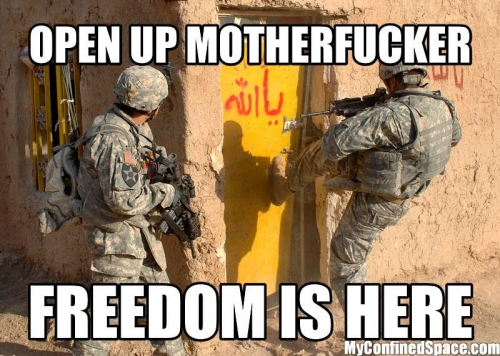
Should Americans believe what their presidents tell them when they make important war messages? The general answer seems to be that they should not. Do presidents systematically lie in their war messages? The answer is not clear. It is hard to assess this without deeper study of the circumstances surrounding their speeches. But because the messages are so faulty and mistaken as a rule, it appears that either presidents lie or else they intentionally exaggerate or else they believe in their own largely false rhetoric or else their information is poor. No matter what’s going on, the fact remains that if history is any guide, Americans should not believe what their presidents tell them when they ask them to go to war.
Common sense should tell Americans the same thing, not to believe these war messages, because most of the wars involve no direct attacks on America anyway. Germany didn’t attack the U.S. in either world war. Russia never attacked the U.S. during the Cold War. North Korea didn’t attack the U.S., and neither did Serbia, Vietnam, Iraq, Yemen, Pakistan, Afghanistan, Grenada, Libya, Panama, Haiti or Syria, all places in which the U.S. has intervened, usually accompanied by some sort of justifications coming out of the White House.



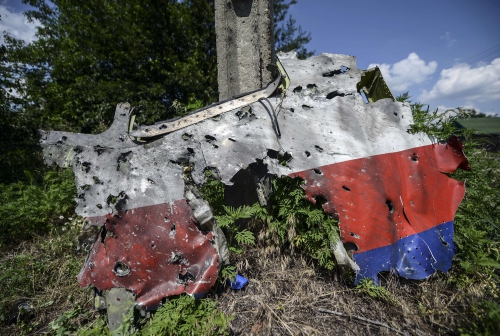


 del.icio.us
del.icio.us
 Digg
Digg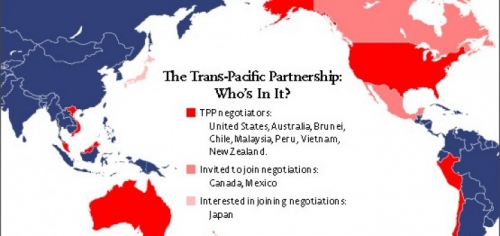

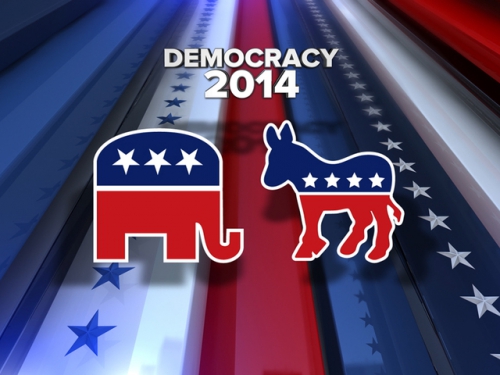


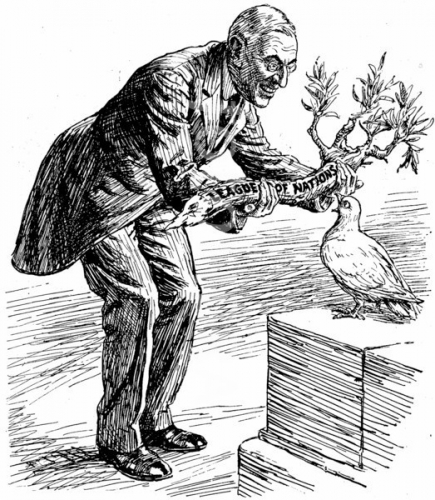
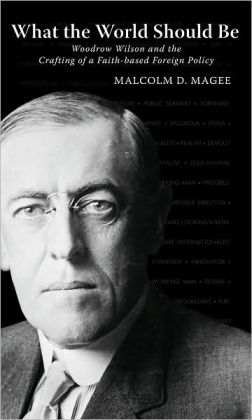 Although I purchased this book soon after it was published, other commitments compelled me to add it to my mountainous stack of books “to be read.” Since this year is the one hundredth anniversary of World War I, and I have already reviewed two books on World War I (Jack Beatty’s
Although I purchased this book soon after it was published, other commitments compelled me to add it to my mountainous stack of books “to be read.” Since this year is the one hundredth anniversary of World War I, and I have already reviewed two books on World War I (Jack Beatty’s